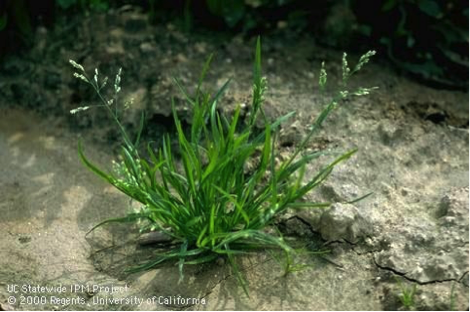
All of these traits make chemical control an attractive and primary mode of management for annual bluegrass. This is true for turfgrass systems where managers use regular applications of PRE and POST herbicides and orchard systems where glyphosate is used (Brosnan, Breeden et al., 2015). To date annual bluegrass biotypes have been reported with resistance to nine mode of action groups (Heap, 2017).

The Weed Science Group at UC Davis is now investigating the extent of resistance in this biotype including possible resistance to other herbicide mode of action groups commonly used in specialty cropping systems. The possible mechanism of resistance is being researched with an aim to mitigate the spread or evolution of resistance in this common weed in the future.
Brosnan JT, Breeden GK, Vargas JJ, Grier L (2015) A Biotype of Annual Bluegrass (Poa annua) in Tennessee Is Resistant to Inhibitors of ALS and Photosystem II. Weed Sci 63: 321-328
Galera H, Chwedorzewska KJ, Wódkiewicz M (2015) Response of Poa annua to extreme conditions: comparison of morphological traits between populations from cold and temperate climate conditions. Polar Biol 38: 1657-1666
Heap I (2017) The international survey of herbicide resistant weeds. www.weedscience.org